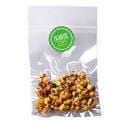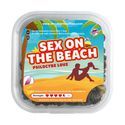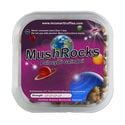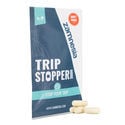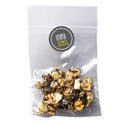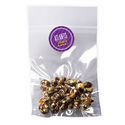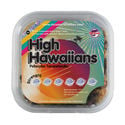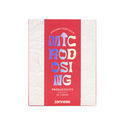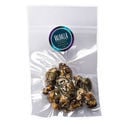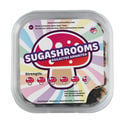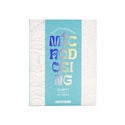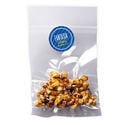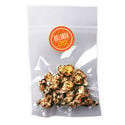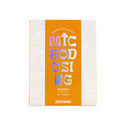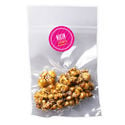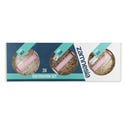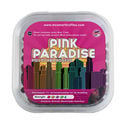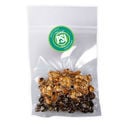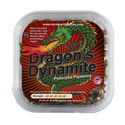-
Seed Shop
-
Feminized
Cannabis seeds -
Autoflowering
Cannabis Seeds -
Regular
Cannabis Seeds -
F1 Hybrid
Cannabis Seeds -
CBD
Cannabis Seeds -
Zamnesia
Cannabis Seeds
-
Top 10’s
- Top 10 Feminized Seeds
- Top 10 Autoflowering Seeds
- Top 10 Regular Seeds
- Top 10 USA Cannabis Strains
- Top 10 Zamnesia Seeds
-
Favourites
- Beginner Strains
- Below 1% THC
- Classic Cannabis Strains
- Cup Winners
- F1 Hybrids
- Fast-Flowering Strains
- High CBD Strains
- High THC Strains
- Mix Packs
- Zamnesia Exclusive Collabs
-
-
Headshop
-
Vaporshop
- Spare Parts & Accessories
- AirVape X
- AirVape XS GO (2021)
- Arizer Air MAX
- Arizer Extreme Q
- Arizer Solo 2
- Arizer V-Tower
- Arizer XQ2
- Boundless CFC 2.0 Vaporizer
- Boundless CFX
- Boundless TERA (V3)
- CRAFTY+
- DaVinci IQ2
- DaVinci IQC
- DaVinci MIQRO
- Dr. Dabber Boost EVO
- Dr. Dabber Stella
- DynaVap Omni 2021
- DynaVap VapCap "M" PLUS 2023
- DynaVap VapCap 'M' 2021
- DynaVap VonG (i) Titanium
- Dynavap The "B" Series
- Eagle Bill
- Firefly 2+
- Flowermate Aura
-
Healthshop
-
Smartshop
-
Shroomshop
-
Growshop
-
Seed Shop
All CategoriesSeed Shop
-
Vaporshop
All CategoriesVaporshop
- Top 10 Vaporizers
- Spare Parts & Accessories
- AirVape X
- AirVape XS GO (2021)
- Arizer Air MAX
- Arizer Extreme Q
- Arizer Solo 2
- Arizer V-Tower
- Arizer XQ2
- Boundless CFC 2.0 Vaporizer
- Boundless CFX
- Boundless TERA (V3)
- CRAFTY+
- DaVinci IQ2
- DaVinci IQC
- DaVinci MIQRO
- Dr. Dabber Boost EVO
- Dr. Dabber Stella
- DynaVap Omni 2021
- DynaVap VapCap "M" PLUS 2023
- DynaVap VapCap 'M' 2021
- DynaVap VonG (i) Titanium
- Dynavap The "B" Series
- Eagle Bill
- Firefly 2+
- Flowermate Aura
- Flowermate Cap Pro
- Flowermate Slick
- Flowermate V5.0S Pro
- G Pen Connect
- G Pen Elite II
- G Pen Micro+
- G Pen Pro
- G Pen Roam
- Hydrology9 Vaporizer
- Hyer Big-E Rig
- MIGHTY
- MIGHTY+
- PAX Mini
- PAX Plus
- PLENTY
- Pax 3 Vaporizer
- Puffco Peak PRO Smart Rig
- Puffco Peak Smart Rig
- Puffco Plus
- Storm Vaporizer
- The Proxy (Puffco)
- VOLCANO CLASSIC
- VOLCANO HYBRID
- Vape-Lifter
-
Smartshop
All CategoriesSmartshop
- Top 10 Smartshop
- Zamnesia Gift Cards
- After Party
- Aphrodisiacs
- Aromatherapy
- Blue Lotus
- CBD Vape Juice
- Capsule Machines
- Crystals, Gemstones & Minerals
- Dream Herbs
- Drug Tests
- Extracts
- Happy Caps
- Herbal Tea
- Herbs & Seeds
- Incense
- Kanna
- Kratom
- LSA Seeds
- Mescaline Cacti
- Microdosing
- Nootropics
- Relaxing
- Salvia divinorum
- Smart Seeds
- Stimulants
- Supplements
- Tinctures
- Vape Herbs
-
TRIBE
All CategoriesTRIBE
- My Membership
- Spend Gift Points
- Exclusive products
- Earn Extra Gift Points
-
TRIBE
- Early Access
- Refer a Friend
- Information
-
TRIBE
-
Language
 United States
United States
Friday, 18 April and Thursday, 24 April 2025*
What's the difference between magic truffles and magic mushrooms?
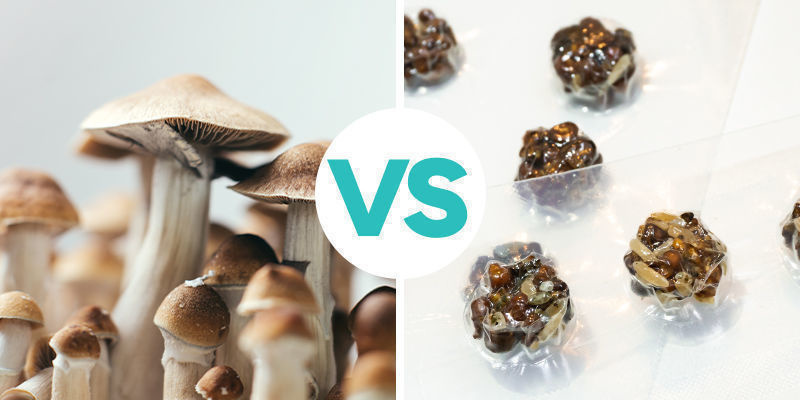
Magic truffles and magic mushrooms both come from psilocybin-containing species of fungus. However, there are important differences between the two regarding potency, growth, and effects—and these do matter to both growers and users. Find out more here.
Magic mushrooms and magic truffles are both well-known for their psychedelic effects, but they are not exactly the same. While both contain psilocybin and psilocin—the key compounds responsible for their mind-altering properties—there are significant differences between them in terms of potency, appearance, consumption, and even legality.
In this article, we will break down the key distinctions between magic mushrooms and magic truffles, helping you understand which might be best suited for your needs.
What are magic truffles and magic mushrooms?
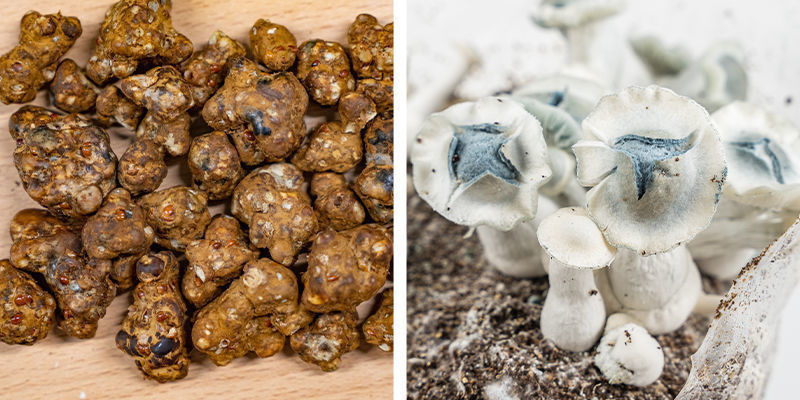
Magic mushrooms and magic truffles both belong to the genus Psilocybe, but they make up different parts of the fungal organisms from which they arise.
Magic mushrooms are the fruiting bodies of the fungus. These mushrooms grow above ground and contain high concentrations of psilocybin. In most cases, those who consume psilocybin-containing magic mushrooms will use a strain of Psilocybe cubensis. During what could be thought of as mushroom breeding season, mushrooms emerge from the subterranean mycelium and release their spores above ground. These spores then drift on the breeze and, hopefully (if you’re a mushroom), start a new colony somewhere. Once they’ve released their spores, they die off. However, though the mushrooms may be gone, the organism is still alive and well below ground.
Magic truffles (also known as sclerotia), on the other hand, are the underground storage structures of other species of psilocybin-containing fungi. They form when the fungus creates a hardened mass of mycelium that allows it to survive in adverse conditions. Psilocybin-containing sclerotia belong to different species of fungus than those that produce magic mushrooms, but they are closely related cousins. Truffles, unlike mushrooms, exist year-round and do not release spores.
While both magic mushrooms and truffles contain psilocybin, their growth patterns, appearance, and potency differ.
Magic truffles vs magic mushrooms: Which is more potent?

For a mycologist, there is a never-ending amount of differences between sclerotia and shrooms. For those growing or consuming them, the key differences are explored below.
Generally, magic mushrooms are more potent than magic truffles. The concentration of psilocybin is higher in mushrooms because they are the reproductive structures of the fungus, whereas truffles serve as nutrient storage.
However, this does not mean that truffles are ineffective. Many users still experience strong psychedelic effects, but higher doses are usually required to match the potency of magic mushrooms.
For those looking to consume psilocybin, the difference in terms of psilocybin content (i.e. potency) is the most important distinction between these two sections of fungal anatomy.
Do magic truffles have different effects than mushrooms?
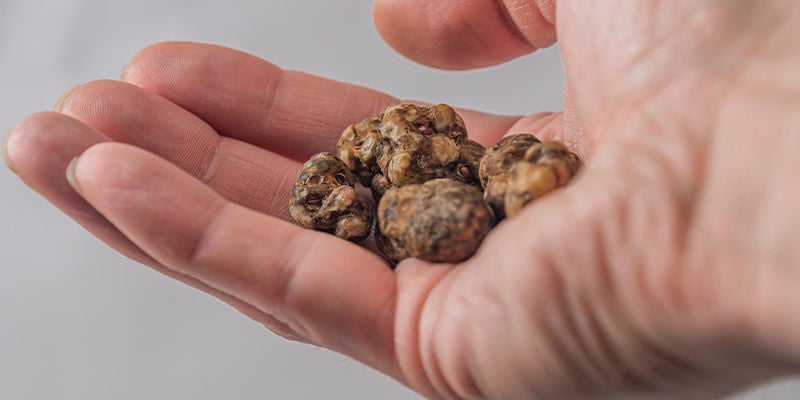
While both substances produce similar psychedelic effects, including visual hallucinations, enhanced emotions, and altered perception, there are subtle differences:
- Magic mushrooms tend to provide a more intense and immersive psychedelic experience. Their effects are stronger and can lead to deep introspection and ego dissolution at higher doses.
- Magic truffles generally produce a milder and more controllable high, making them a preferred option for beginners or those seeking a more social, lighthearted experience.
How are magic truffles & magic mushrooms consumed?
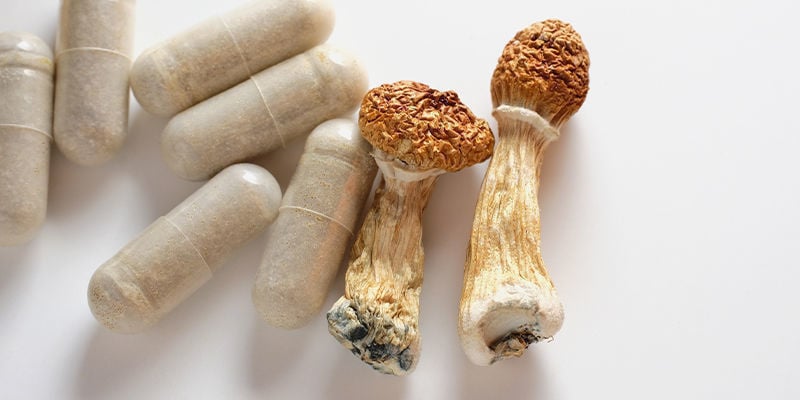
Both magic mushrooms and truffles can be consumed in various ways, though some methods may be more effective than others. What’s more, due to differences in flavour and their likelihood of producing an upset stomach, you may want to consume each differently!
Both shrooms and truffles can be consumed in the following ways:
- Eating raw (dried or fresh): The most straightforward way, though some find the taste unpleasant.
- Brewing into tea: This helps reduce nausea and makes the onset smoother.
- Capsules: Pre-measured doses are available for convenience.
- Lemon tek: Soaking the mushrooms or truffles in lemon juice before consumption is believed to quicken the onset—and potentially the intensity—of the effects.
While you can consume magic mushrooms and magic truffles in the same ways, you might not want to. Neither have a particularly pleasant taste, but truffles are known for their strong, earthy flavour that many find off-putting.
What’s more, due to their weaker potency, you generally need to consume more of them than you would shrooms, which can then upset your stomach. This applies to both parts of the fungus, but especially to truffles—consider making tea or an extract to improve taste and digestion.
How does dosing vary between magic truffles and mushrooms?
Given their general difference is potency, a lower dose of mushrooms is typically needed to achieve the same effects as truffles. Consider the following as a rough comparison:
- Mild trip: ~1–2g dried magic mushrooms or ~5–7g fresh magic truffles
- Strong trip: ~3–5g dried mushrooms or ~10–15g fresh truffles
The numbers given here are estimates, and the actual ideal dose will depend on the specific psilocybin content of your shrooms or truffles of choice, among numerous other factors.
To gain a better idea of the right dose for you, consult our handy magic mushroom and truffle dosage calculator for tailored results.
Appearance and cultivation differences
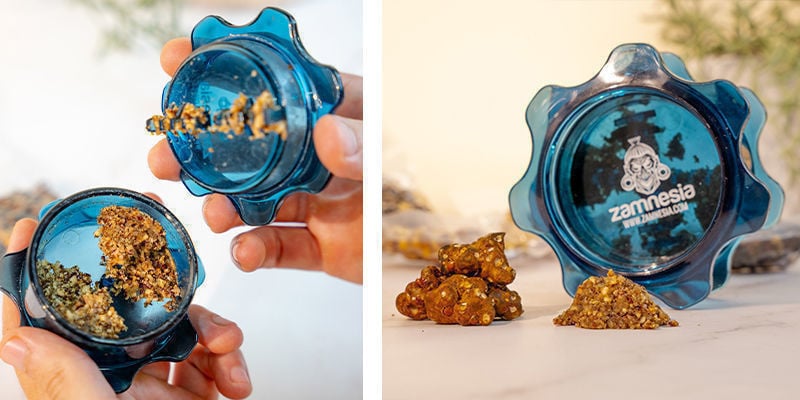
There are significant differences in the appearance of shrooms and truffles—in fact, they look totally different! Additionally, there are some notable differences in cultivation requirements to consider.
Magic mushrooms
Though there exist far too many magic mushroom species to cover in one article, we can make some generalisations regarding the most common species. Psilocybe cubensis, which is the species you’re most likely to come across, tends to be gold-brown in colour with bulbous caps and off-white stems that can range in thickness.
These varieties grow above ground in damp environments, often in forests or grasslands in close proximity to herbivore dung. Cubensis varieties are most common in tropical climates with mild winters.
Indoors, they can grow on a range of substrates but require warmth and humidity—mimicking their natural habitats. Other species are much more difficult to cultivate indoors, and can look very, very different from one another.
Magic truffles
Truffles, on the other hand, look like small, wrinkled nuggets or clumps of hardened mycelium—or like desiccated brains. They form underground as a survival mechanism for the fungus and do not have caps or stems. They really are just lumps.
Much like mushrooms, truffles can be cultivated in controlled environments without the need for complex conditions. However, they are not as popular to grow at home compared to Psilocybe cubensis mushrooms.
Legality: Where are magic truffles and magic mushrooms allowed?
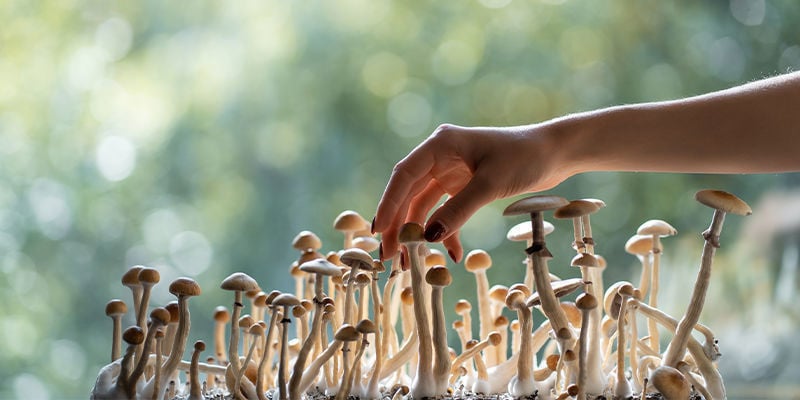
Magic mushrooms and truffles are subject to vastly different legal restrictions worldwide, and penalties for possession can vary from nonexistent to serious prison sentences in places like Thailand (FDA Warns, 2024).
Due to their psilocybin content, these substances are generally classified as illegal in many countries. However, some states—and even individual cities—in the US have decriminalised their use, including Oregon, Washington D.C. and Colorado.
In other places, magic mushrooms are deemed illegal while truffles exist in a legal grey area. For example, in the Netherlands, truffles can be legally purchased from smartshops and other vendors, while magic mushrooms are banned.
In this case, the legal differences come down to the particular wording of the relevant laws, which state that “psilocybin-containing mushrooms” are illegal. As truffles grow below ground, they are not technically mushrooms and thus evade the law.
Other countries state that anything that contains psilocybin is illegal, which would include truffles by default.
Which is better for beginners: Magic truffles or magic mushrooms?

If you are new to psychedelics, magic truffles are generally advisable. Here’s why:
- Their lower potency can make for a milder trip better suited to novices.
- Legal availability in some regions means sourcing high-quality truffles can be easier than doing so with mushrooms.
That said, if you are looking for a deeper psychedelic journey, magic mushrooms might be the more desirable option. What’s more, a low dose of magic mushrooms isn’t going to blow your mind, so we wouldn’t advise beginners not to take shrooms in fear of excessive potency.
Moreover, truffles really are tough on the stomach and are more likely to induce nausea compared to shrooms, which can be off-putting. Perhaps the main draw of truffles is that they are easier to get hold of in certain areas.
Discover the world of psilocybin

As they both contain psilocin and psilocybin, magic truffles and mushrooms are fundamentally similar. With that said, the experiences of consuming and growing them can differ significantly, and there are even meaningful differences regarding their potency. Not only that, but their legality varies greatly depending on the region.
So if staying within the bounds of the law is important to you, do your due diligence to ensure truffles and/or mushrooms are legal or decriminalised in your jurisdiction. And to source high-quality magic truffles, magic mushroom grow kits, and other psilocybin-related products, check out Zamnesia’s store.

- FDA THAI : Food and Drug Administration, & Thailand. (27 december 2024). FDA Warns Magic Mushrooms Are Dangerous and Illegal in Thailand - https://en.fda.moph.go.th
- France
- Germany
- International
- Italy
- Netherlands
- Spain
- United Kingdom
- United States
Magic truffles
-
£12.95 £9.71
-
£12.08 £9.06
-
£17.27 £12.95
-
£12.95 £6.47
-
£17.27 £12.95
-
£2.58 £1.94+2 Extra Gift Points
-
£17.27 £10.36
-
£13.81 £10.36
-
£21.59 £12.95
-
£12.95 £6.47
-
£19.86 £9.93
-
£21.59 £12.95
-
£12.08 £9.67
-
£12.95 £6.47
-
£14.68 £11.01
-
£15.54 £11.66
-
£17.27 £10.36
-
£12.95 £6.47
-
£12.95 £6.47
-
£14.68 £11.01
-
+23 Extra Gift Points
-
£17.27 £12.95
-
£20.72 £10.36
-
£17.27 £12.95
You might also like
-
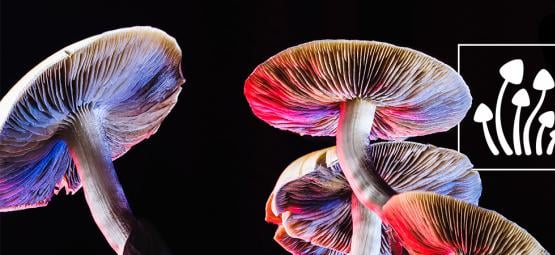
 4 min
13 January 2025
How many types of magic mushrooms exist?
There are hundreds, if not thousands, of magic mushroom species, spanning multiple genera. Now, we can't name them all here—they may not all have even been discovered—but we can explore some of th ...
4 min
13 January 2025
How many types of magic mushrooms exist?
There are hundreds, if not thousands, of magic mushroom species, spanning multiple genera. Now, we can't name them all here—they may not all have even been discovered—but we can explore some of th ...
-
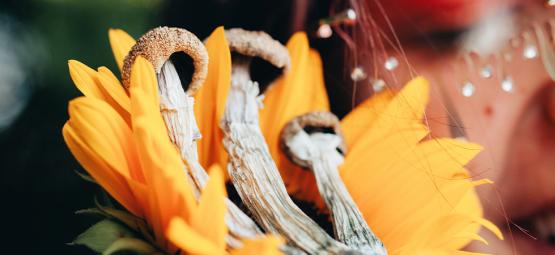
 9 min
19 April 2019
How To Prepare For A Safe Psychedelic Trip?
Here at Zamnesia, we want to make sure you have a good trip on your first plummet down the rabbit hole. Follow these guidelines whether you just want to giggle uncontrollably for a while or give your ...
9 min
19 April 2019
How To Prepare For A Safe Psychedelic Trip?
Here at Zamnesia, we want to make sure you have a good trip on your first plummet down the rabbit hole. Follow these guidelines whether you just want to giggle uncontrollably for a while or give your ...
-

 4 min
5 February 2018
The Most Famous Psilocybin Mushrooms
Magic mushrooms are mostly known for inducing psychedelic experiences, but did you know that there are actually benefits to ingesting psilocybin, the most abundant psychoactive substance in shrooms? T ...
4 min
5 February 2018
The Most Famous Psilocybin Mushrooms
Magic mushrooms are mostly known for inducing psychedelic experiences, but did you know that there are actually benefits to ingesting psilocybin, the most abundant psychoactive substance in shrooms? T ...
-
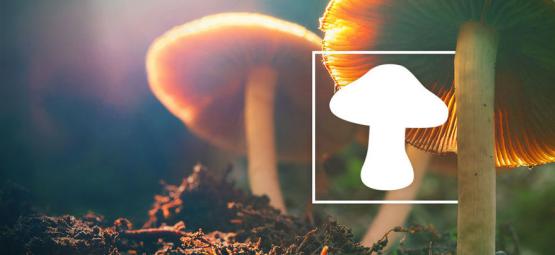
 4 min
24 November 2017
How To Identify Different Types Of Magic Mushrooms
Looking for help identifying your favourite magic mushrooms? In this article, we take a look at the most common types of shrooms that you can encounter. ...
4 min
24 November 2017
How To Identify Different Types Of Magic Mushrooms
Looking for help identifying your favourite magic mushrooms? In this article, we take a look at the most common types of shrooms that you can encounter. ...
Categories
-
Seed Shop
- Feminized Cannabis Seeds
- Autoflowering Cannabis Seeds
- Regular Cannabis Seeds
- F1 Hybrids
- CBD Seeds
- Zamnesia Seeds
- Top 10 Autoflowering Seeds
- Top 10 Regular Seeds
- Top 10 USA Cannabis Strains
- Top 10 Zamnesia Seeds
- Top 10 Feminized Seeds
- Beginner Strains
- Below 1% THC
- Classic Cannabis Strains
- Cup Winners
- F1 Hybrids
- Fast-Flowering Strains
- High CBD Strains
- High THC Strains
- Mix Packs
- Zamnesia Exclusive Collabs
- Amnesia Seeds
- Blueberry Seeds
- Cheese Seeds
- Diesel Seeds
- Gorilla Seeds
- Haze Seeds
- Kush Seeds
- Purple Seeds
- Skunk Seeds
- White Widow Seeds
- Zamnesia Seeds
- ACE Seeds
- Advanced Seeds
- Amsterdam Genetics
- Anesia Seeds
- Auto Seeds
- Barney's Farm
- Big Buddha Seeds
- Bomb Seeds
- BSB Genetics
- BSF Seeds
- Buddha Seeds
- Bulldog Seeds
- Cali Connection
- Cannarado Genetics
- CannaBioGen
- CBD Crew
- CBD Seeds
- Compound Genetics
- The Dank Seeds
- Dark Horse Genetics
- Delicious Seeds
- Devil Harvest Original
- Dinafem
- DNA Genetics
- Doctor's Choice
- Dr. Underground
- Dutch Passion
- Elite Seeds
- Eva Seeds
- Exotic Seed
- Expert Seeds
- FastBuds
- Female Seeds
- Fenocan
- Flash Auto Seeds
- French Touch Seeds
- Garden of Green
- GeneSeeds
- Genehtik Seeds
- G13 Labs
- Grass-O-Matic
- Greenhouse Seeds
- Grow Your Own (DNA)
- Growers Choice
- Homegrown Fantaseeds
- House of the Great Gardener
- Humboldt Seed Company
- Humboldt Seed Organization
- Kalashnikov Seeds
- Kannabia
- The Kush Brothers
- Light Buds
- Little Chief Collabs
- Medical Seeds
- Ministry of Cannabis
- Mr. Nice
- Nirvana Seeds
- Original Sensible
- Paradise Seeds
- Perfect Tree
- Pheno Finder
- Philosopher Seeds
- Positronics Seeds
- Purple City Genetics
- Pyramid Seeds
- Rare Dankness
- Reggae Seeds
- Reserva Privada
- Resin Seeds
- Ripper Seeds
- Royal Queen Seeds
- Sagarmatha Seeds
- Samsara Seeds
- Seedstockers
- Sensation Seeds
- Sensi Seeds
- Serious Seeds
- Silent Seeds
- Soma Seeds
- Spliff Seeds
- Strain Hunters
- Sumo Seeds
- Super Sativa Seed Club
- Super Strains
- Sweet Seeds
- T.H. Seeds
- Top Tao Seeds
- Vision Seeds
- VIP Seeds
- White Label
- World Of Seeds
- Zativo Seeds
- Seed Banks
-
Headshop
-
Vaporshop
-
Healthshop
-
Smartshop
- Top 10 Smartshop
- Zamnesia Gift Cards
- After Party
- Aphrodisiacs
- Aromatherapy
- Blue Lotus
- CBD Vape Juice
- Capsule Machines
- Crystals, Gemstones & Minerals
- Dream Herbs
- Drug Tests
- Extracts
- Happy Caps
- Herbal Tea
- Herbs & Seeds
- Incense
- Kanna
- Kratom
- LSA Seeds
- Mescaline Cacti
- Microdosing
- Nootropics
- Relaxing
- Salvia divinorum
- Smart Seeds
- Stimulants
- Supplements
- Tinctures
- Vape Herbs
-
Shroomshop
-
Growshop
- Top 10 Growshop
- Top 10 Plant Seeds
- All Seeds
- Cacti
- Chilli & Pepper Seeds
- Companion Plants
- Edible Plant Seeds
- Exotic Seeds
- Flower Seeds
- Fruit Seeds
- Herb Seeds
- Interior Plant Seeds
- Microgreens
- Psychoactive Plant Seeds
- Sprouting
- Vegetable Seeds
- Wellness Plant Seeds
- After Harvest
- Climate Control
- Fertilizer
- Grow Tents
- Harvest, Dry & Cure
- LED Grow Lights
- Plant Seeds
- Propagation
-
Merchandise
-
Sale section
Account
Information
Our Offers
Our website won't work without these cookies activated. Therefore functional cookies can't be disabled.
Table of contents
- What are magic truffles and magic mushrooms?
- Magic truffles vs magic mushrooms: Which is more potent?
- How are magic truffles & magic mushrooms consumed?
- Appearance and cultivation differences
- Legality: Where are magic truffles and magic mushrooms allowed?
- Which is better for beginners: Magic truffles or magic mushrooms?
- Discover the world of psilocybin




















